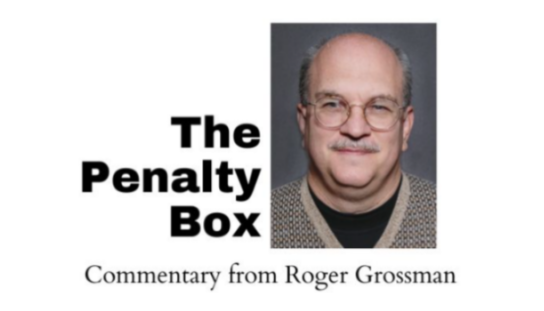By Roger Grossman
News Now Warsaw
Back in March, I prepped you for the new rules Major League Baseball implemented for 2023.
That was the week before the season started, and in that space, I had two objectives: to explain what the changes were and to guard us all against the inevitable overreaction that comes from major changes in the era of social media and fact-free opinion.
I said then that we needed to wait until the middle of summer to look at the data and see just how the game of baseball would change with the new rules in place, what the unintended consequences might be and whether we could live with it all.
One of the key phrases everyone was using when it came to the new rules and their objective was “pace of play.”
Almost all of the new rules that baseball put in were stoked around the concept of eliminating the periods between pitches where, literally, nothing is happening on the field.
For many years, those gaps in action were part of the charm of baseball. They allowed fans in the stands to have running conversations with each other about baseball things and non-baseball things and not miss a pitch.
But approaching the quarter pole of the 21st Century, the younger sports fan has very little interest in gaps, lags, delays and downtime.
They demand action, and baseball set out to deliver that for them.
They tested a lot of these rules in the minor leagues before turning them loose in the major leagues. They didn’t rely on gut feelings or hunches. They knew what they wanted to find, and they had a very detailed plan to get there.
So, how’s it going?
Last season, the major league average for a game was 3:04 (just over three hours) for the full season. At one point during the summer, it was 3:09. Compare that to the first two months of the current season where the average was 2:38.
That means, from a similar place last year, the new rules have shaved off a half-an-hour from game times. That’s a lot — 17-percent. For perspective, the average hasn’t been this low in about 40 years.
What they are doing is working. Why?
For one, the pitch clock works.
I don’t think anyone who was paying close attention to this rule change thought it wouldn’t have a significant impact. The one X factor in it was the question of whether it would be strictly followed by umpires … and it most certainly has been.
The only trouble I see with it — and I did say this before the season started — is that as the innings mount on pitchers and the thermometer creeps up and brings the humidity with it, it’s going to be hard for a starting pitcher to keep throwing pitches with only 15 or 20 seconds in between (depending on whether there are runners on base or not).
I think adjusting to 20 and 25 seconds would help even that out.
I thought the bigger bases were dumb before, and I still don’t see the point. However, adding an “orange” base at first base is still the next idea that needs consideration. We’ll delve deeper into that another time.
Baseball, however, credits the bigger bases along with the limits on how often pitchers can step off the rubber and throw over to first base with a renewed interest in stealing second base.
The people at MLB who were trying to craft these rule changes were trying to not only bring action back into the game but also show off the athleticism of the players on their rosters. The number of steal attempts is still only 1.8 per game this season—which doesn’t seem like a lot.
But factor into the equation that almost 80 percent of attempted stolen bases are successful (that would be an MLB record if it holds all season) and that change is working, too.
Plus, the silliness of pitchers just stepping off repeatedly has ended and it’s never coming back.
The other massive change was taking away the shift from defenses.
Making defenses play two players on either side of second base and no one in the outfield grass has allowed left-handed batters more room to operate on the right side of the infield. The collective batting average for balls put in play so far is .298, which is up six points from last year.
But left-handers are hitting 37 points higher on pulled ground balls and 28 points higher on pulled line drives than last season.
The truth is the rule changes are absolutely achieving the goals they were put in place to achieve. But, still, we need to let the rest of the season play out.
And if you think they work now in speeding up games, imagine what postseason games will be like.
* * *
Roger Grossman has been covering local sports in Kosciusko County for more than 30 years and is employed with News Now Warsaw. You can reach him at rgrossman@kensington.media.





